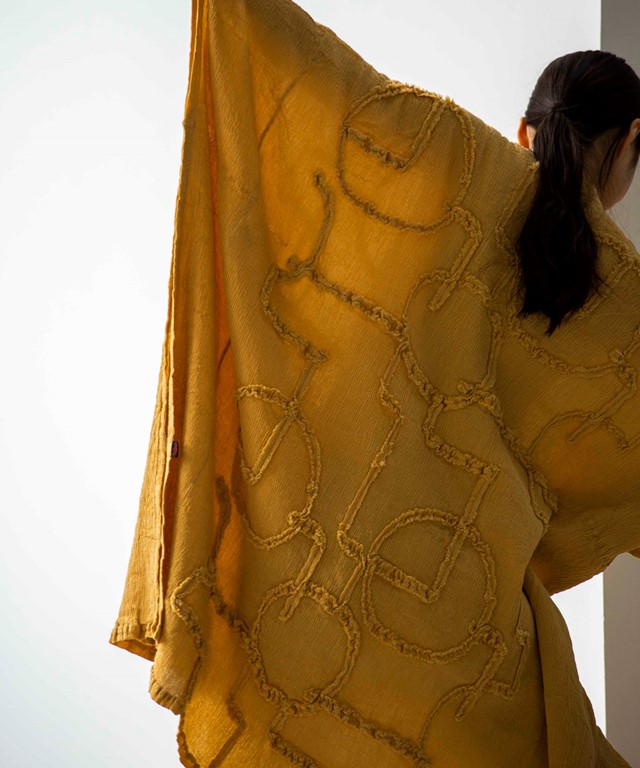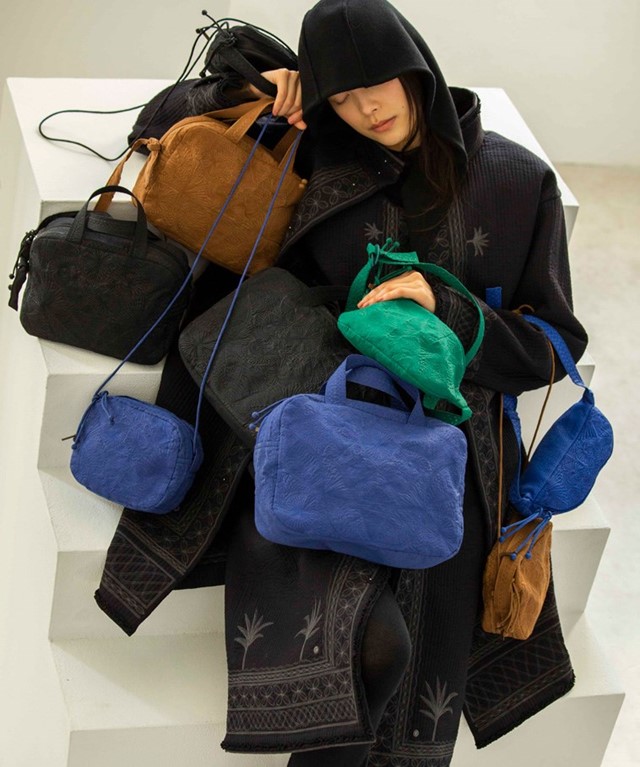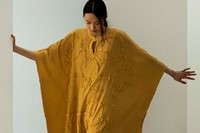Headed by designer Makiko Minagawa, who worked beside Issey Miyake for over three decades, the craft-first label encourages a symbiosis in the environments we live in
- Who is it? HaaT is a Japanese textile-focused label headed by Issey Miyake’s Textile Designer, Makiko Minagawa.
- Why do I want it? Meticulously crafted garments made from natural materials and promoting traditional Japanese and Indian artistry.
- Where can I find it? HaaT is available at Issey Miyake London.
Who is it? After graduating from Kyoto City University of Fine Arts in textile design and dyeing, designer Makiko Minagawa set her sights on London. But after a fortuitous meeting with Issey Miyake backstage at a fashion show in 1970, she was quickly convinced to stay in Japan to work with the legendary designer. “Instead of presenting me with a job offer, he said to me ‘let’s work together’,” she recalls, “I was persuaded by him that materials from Japan were needed, and this is what has led me to where I am today.”
In 2000, after working by Miyake’s side for over 30 years as his textile designer, Minagawa decided to launch her own textile-focused label. “We had started to produce more fabrics for pleating purposes in our company, so the work with weaving factories for natural fabrics decreased and the factories shifted to synthetic fabrics,” she explains, “we wanted to keep using natural fabrics and support the factories with whom we hold long-standing relationships.” And so, with Miyake’s support, HaaT was founded with the intention of ennobling the traditional craftsmanship of materials made in both Japan and India.
With its tripartite meaning, the name ‘HaaT’ poetically seams together the sensitive artistry and human relationships which underpin the label. HaaT plays on ‘heart,’ in reference to the garments made in Japan, where the label is based, and its homonym ‘HaaTH’ signifies ‘hand’ and ‘handcraft’ in Hindu. Combined, ‘HaaT’ means ‘market’ in Sanskrit. To wear the label’s garments is to feel the “warmth of the hands” that crafted it, the haptic heart of HaaT.

Since 2021, HaaT has been reconceived as a biannual collection, consisting of three lines “categorised according to the way we live, the purpose, the time of day, and the amount of money we want to pay.” Every Day comprises more simple designs, made of materials that can endure daily living. Every Week are clothes to be enjoyed on occasion while Every Month are garments “that make a statement, that express who you are.” As Minagawa explains, “None of them are impossible to coordinate, but you can vary them by coordinating in your own way.”
Why do I want it? To wear HaaT’s garments is to live artfully in symbiosis with the environment in which we exist. By tapping into the exquisite savoir-faire of traditional artisans in both Japan and India, HaaT not only ensures that the designs are of unparalleled quality, but also promotes the rich heritage of each culture. “Natural materials are the main focus,” says Minagawa, “clothes which can be enjoyed, that incorporate the heritage of the past into new and current styles and lifestyles.”
Take, for example, the Kyo Chijimi fabrics used in the label’s Every Day line. Woven by artisans in Lake Okubiwa, in the Shiga Prefecture, gaps are left in the thread to minimise contact between fabric and skin – a process to ensure the adaptability of the garment to different temperatures. It is then passed through natural spring water, which prevents thread breakage, in order to shrink the fabric and produce its signature shadowed hues.
Other garments are handcrafted in Ahmedabad City in northwest India, a relationship made possible by Minagawa’s longstanding passion for the country’s material-making techniques. In 1983, while living in France, the designer took part in a commission from the Indian Government to make clothes for Issey Miyake using Indian materials. The resulting collaboration was exhibited at the Musée des Arts décoratifs in Paris as part of France’s Year of India cultural program.

“The person in charge of this was Martand Singh, called MAPU. He introduced to me various production centres in India,” she recalls, “MAPU has given many handloom weavers jobs, so that they can pass on their traditional skills, while young designers are given weaving and planning jobs so that both sides can develop and grow. I was moved by his presence and felt that such a person could not be found in Japan.”
And perhaps this is the magic of HaaT: Minagawa’s absolute care for the process and the people involved is imbued in each fibre of her garments. “It is important to have various conditions that allow resonance and communication with people in different positions,” she explains, “if you don’t communicate with people and their feelings, you cannot develop into manufacturing.” For HaaT’s Director and Textile Designer, the joy of her work is “catching up with each other on what kind of materials to make” – that is how new fabrics or designs are born.
Where can I find it? HaaT is available at Issey Miyake’s 10 Brook Street store in London, and online.






